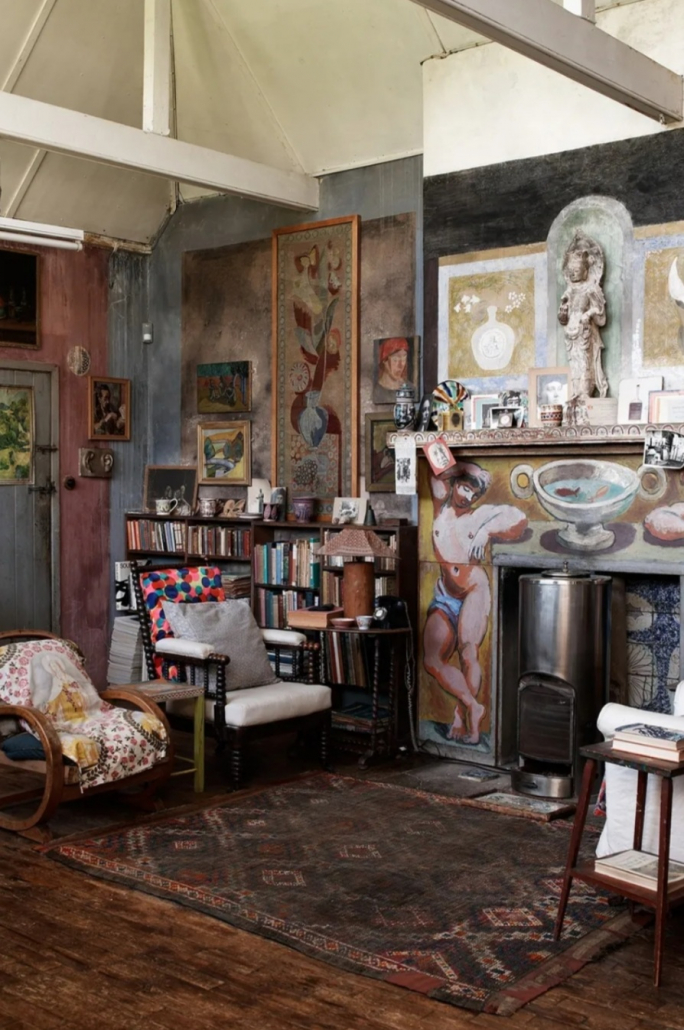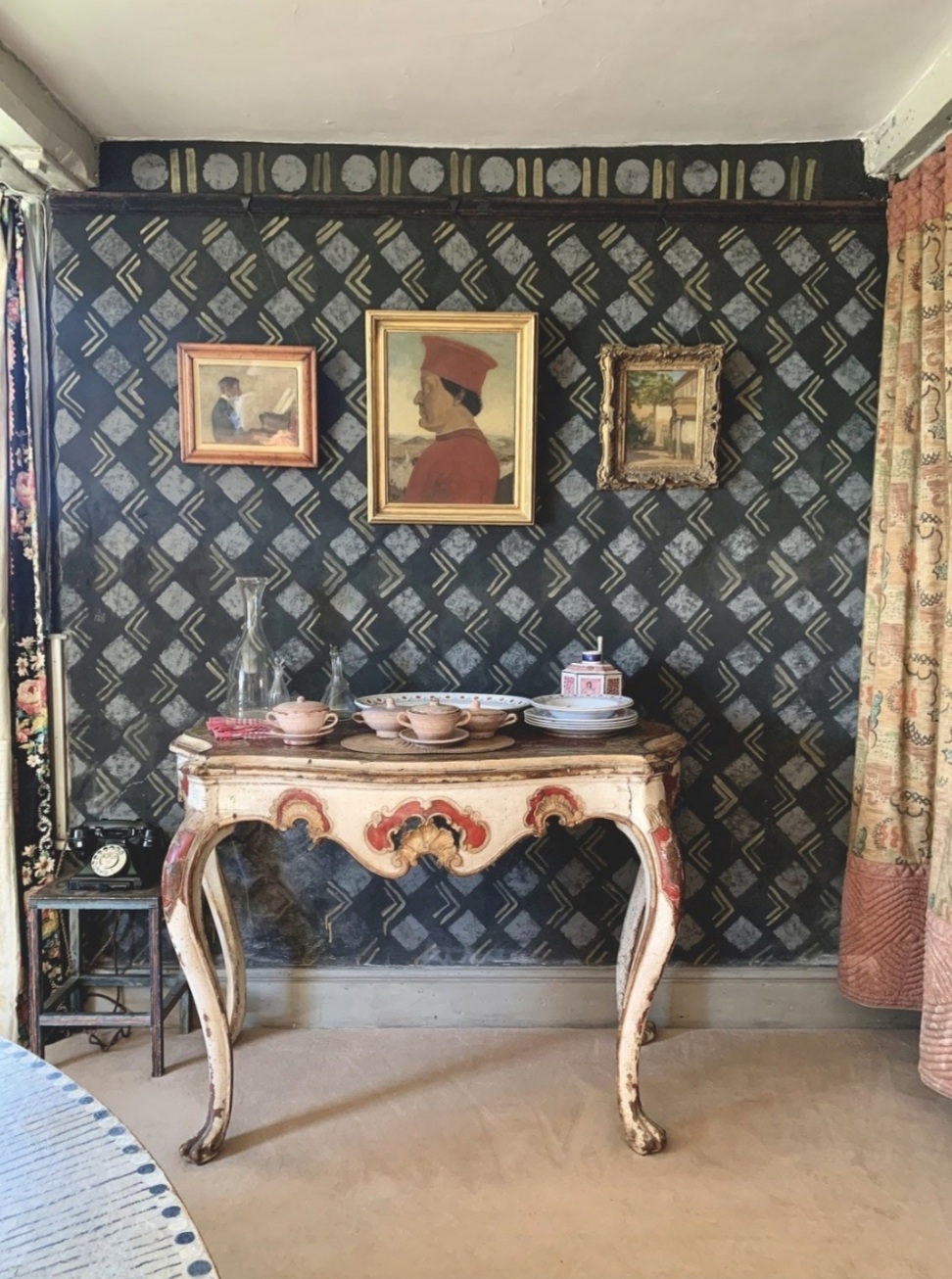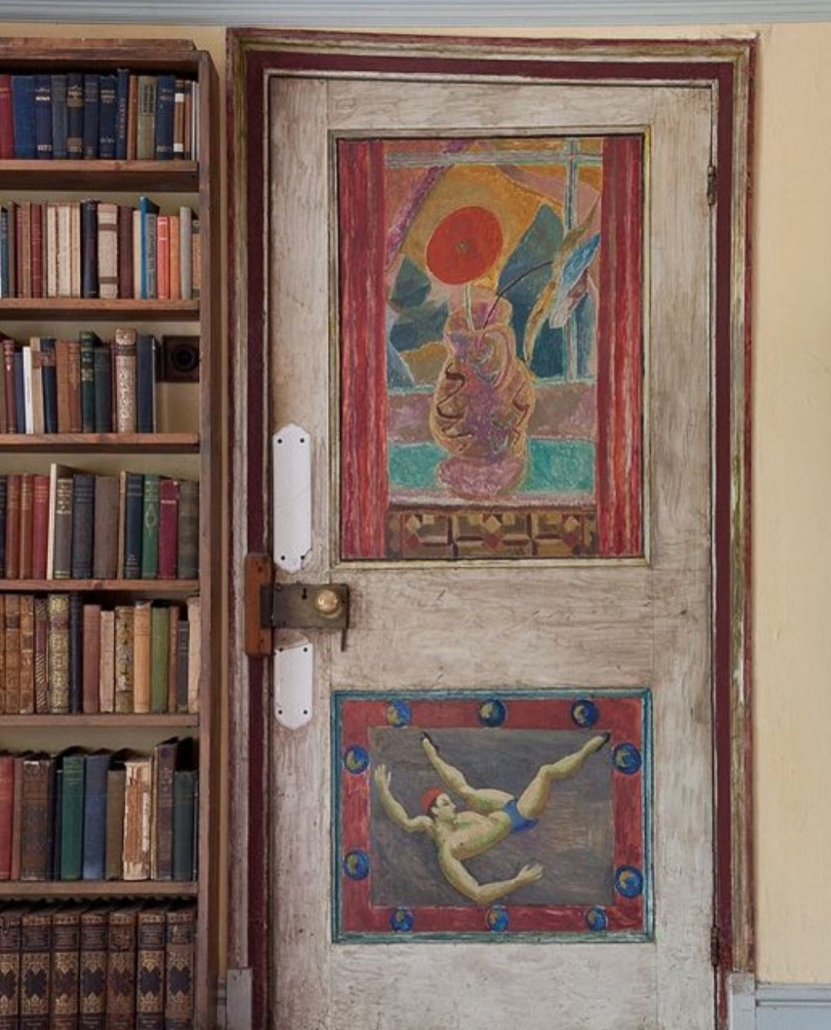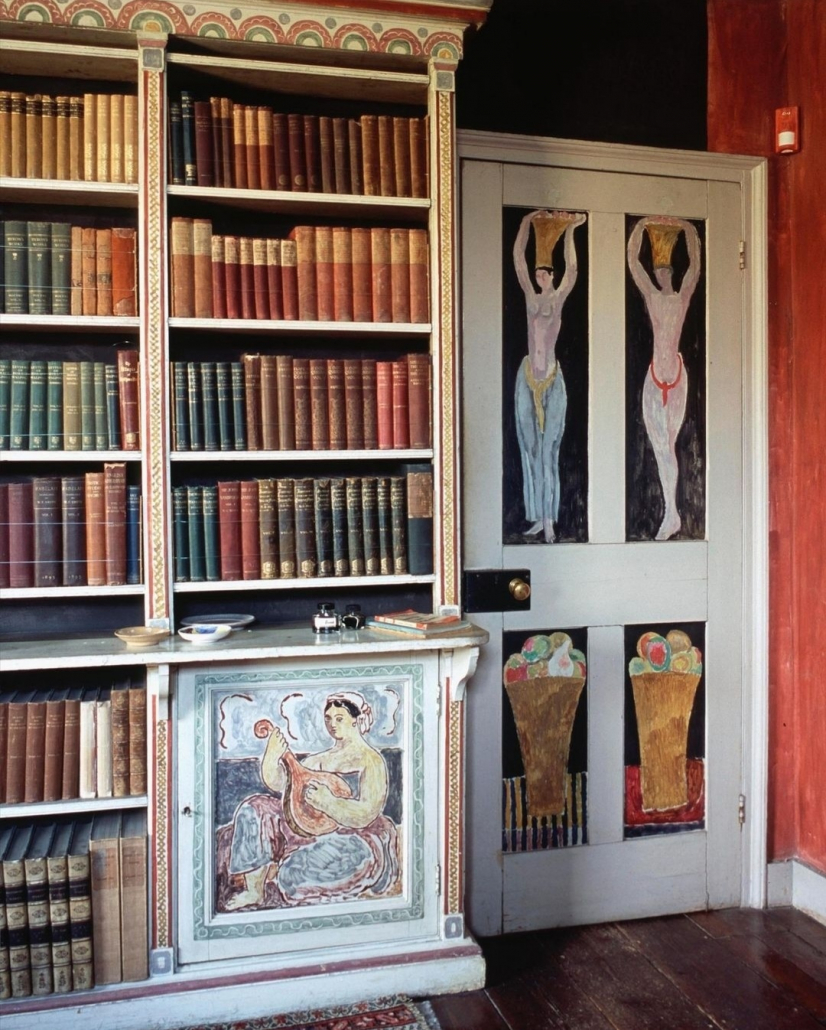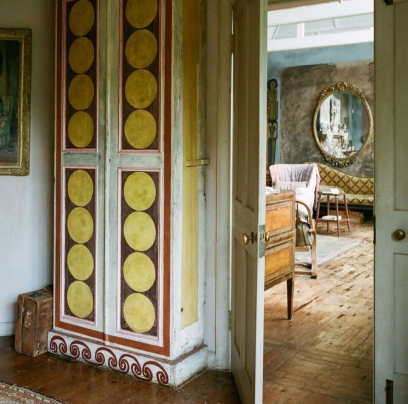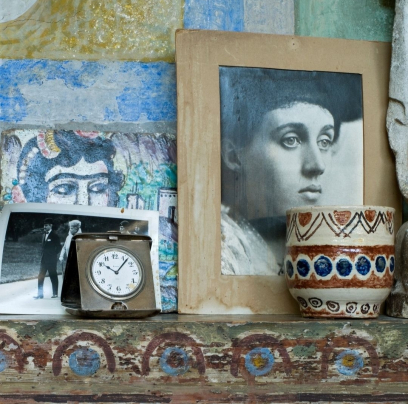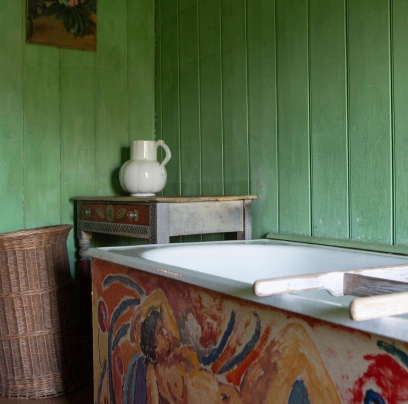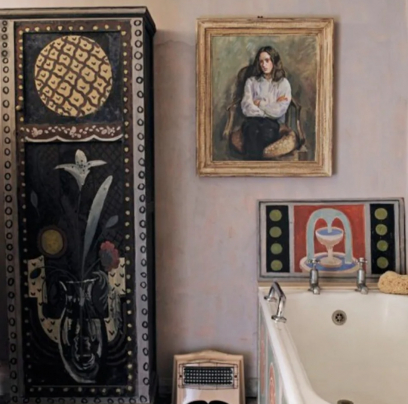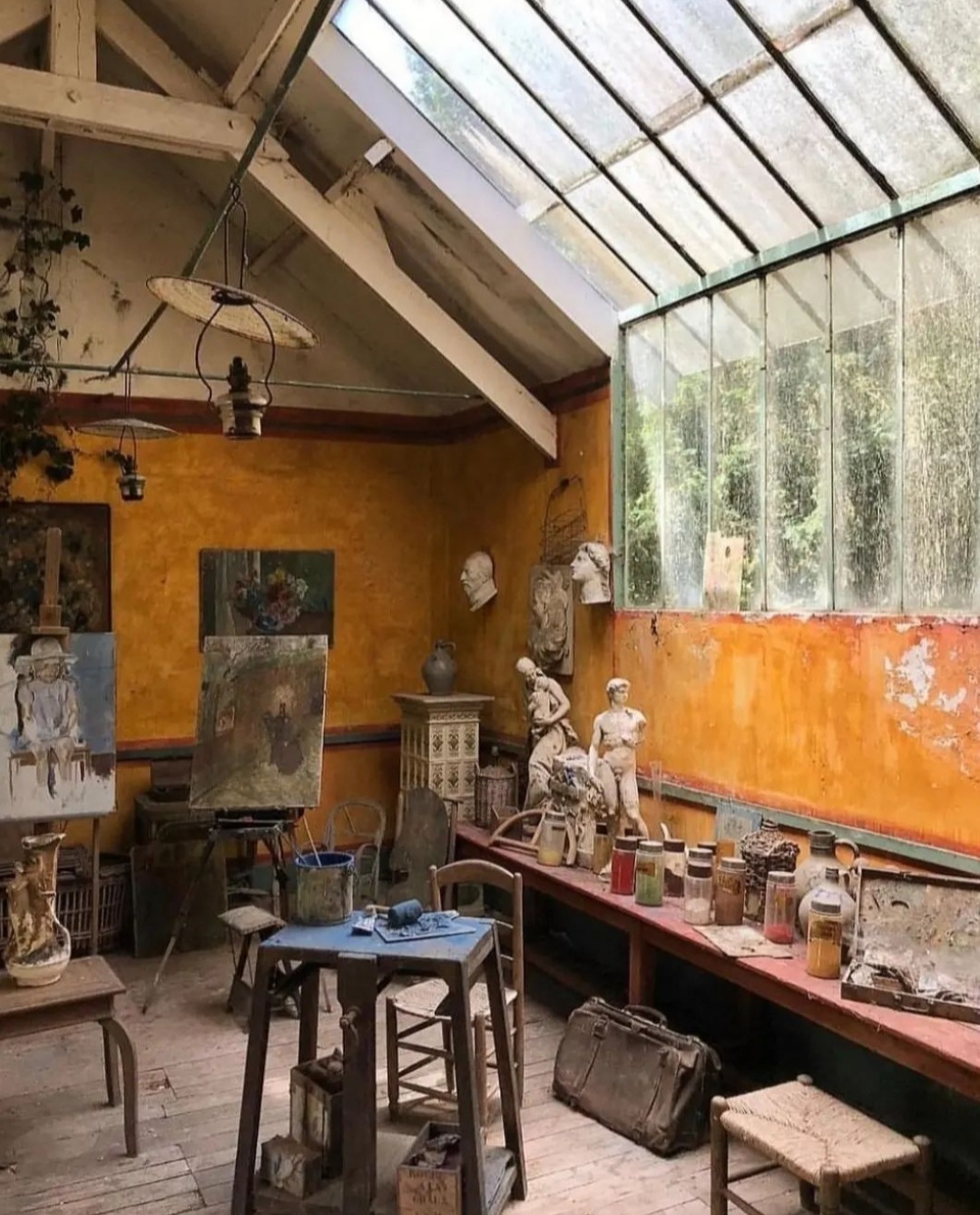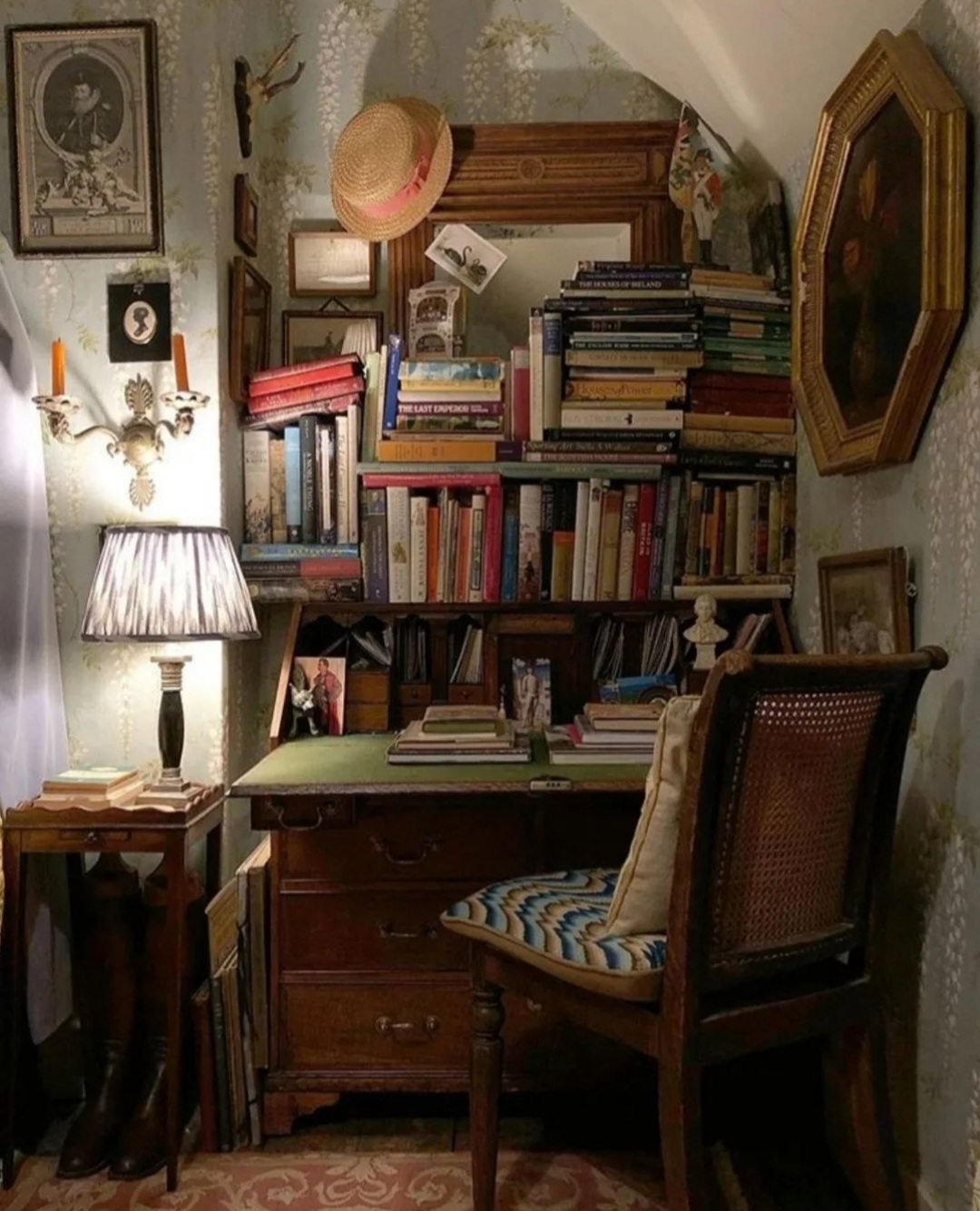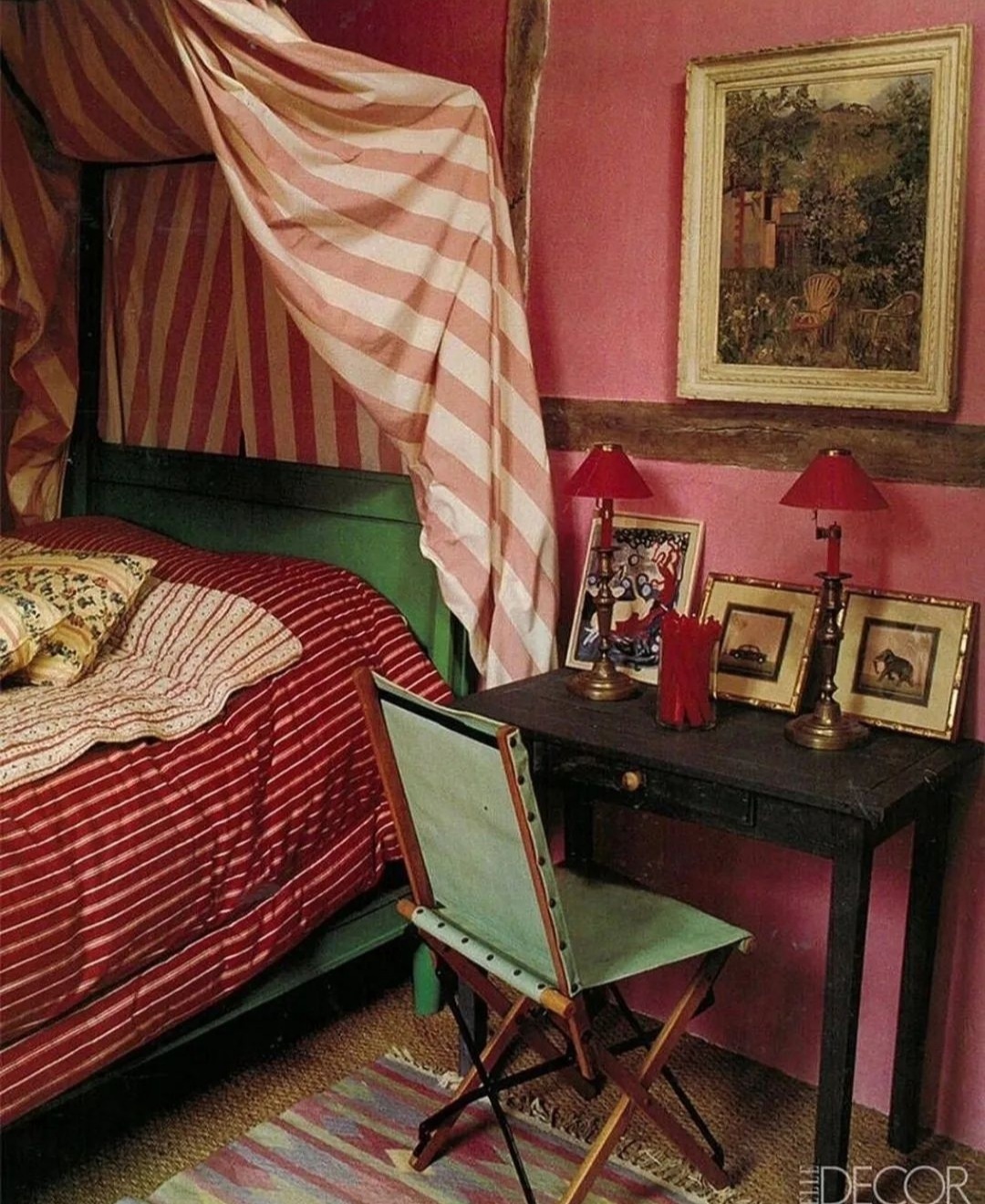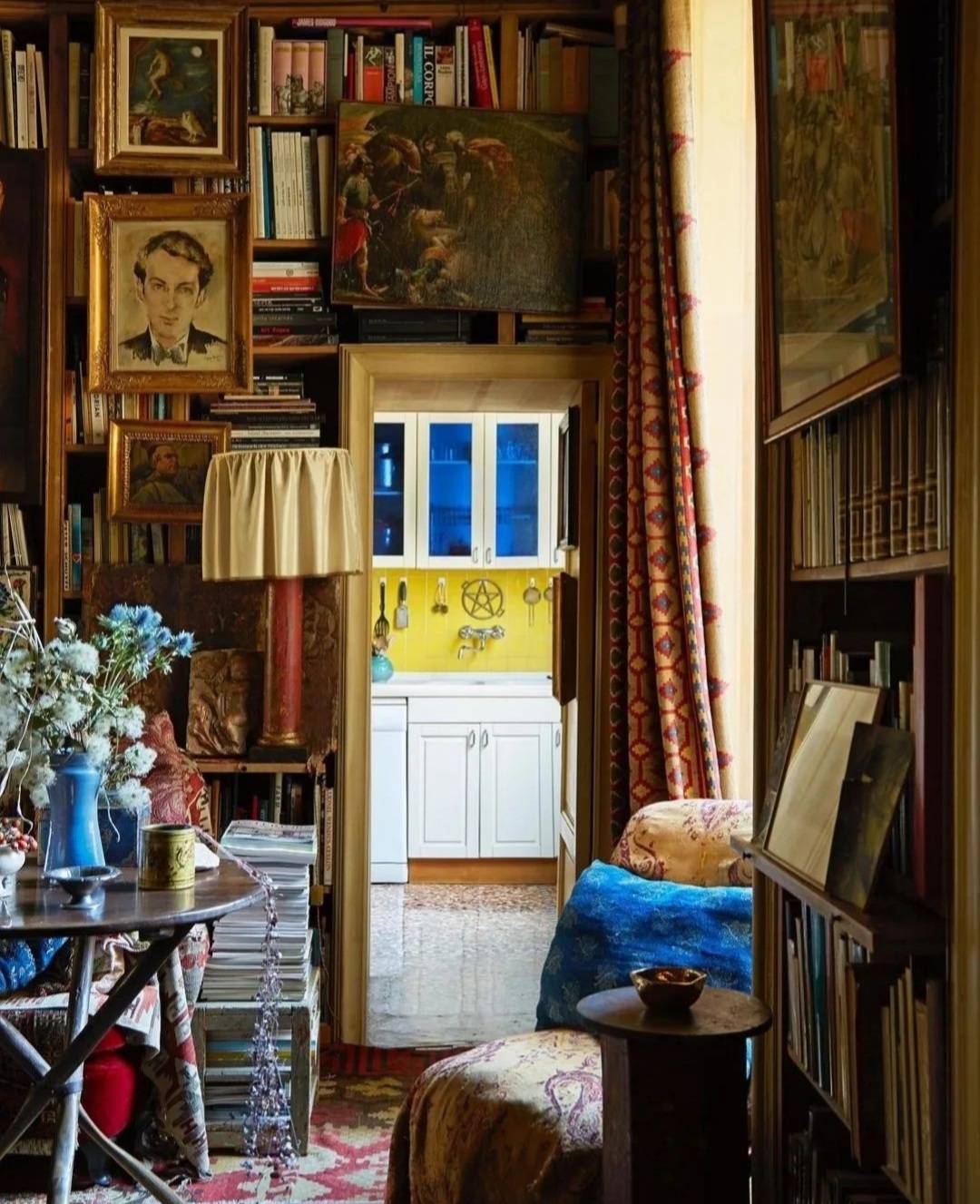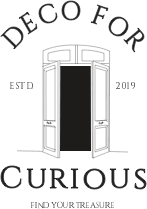Artblog Curioser
CHARLESTON HOUSE – SUSSEX, ENGLAND
In 1916, the painter Vanessa Bell, sister of the famous writer Virginia Woolf, and her friend and lover, the painter Duncan Grant, moved to Charleston in search of a quiet place to free up their pictorial interests, and remained there until Vanessa’s death in 1961 and Duncan’s in 1978.
Almost as soon as they moved in, Bell and Grant began painting every surface of the cottage, transforming it into a living work of art. They painted walls, of course, but also tables, chairs, headboards and bookshelves; everything glowed with swirls and spirals of colour and pattern, creating an atmosphere full of life and vitality, the opposite of the conservative and conventional décor of the period. Inside the house, post-impressionist paintings, murals, painted furniture, ceramics and exotic fabrics flourished.
Vanessa Bell and Duncan Grant also decorated the Charleston garden designed by Roger Fry. Together they transformed the orchards and chicken coops, essential to the family’s subsistence during the First World War, into a decorative garden with Mediterranean and English influences, a summer playground made to inspire painting.
Charleston became over the following decades a meeting place for some of the most liberal artists, intellectuals, writers and thinkers of the 20th century, known collectively as The Bloomsbury Group.
Photo AD Magazine
The Bloomsbury Group
Bloomsbury refers to the name of the London neighbourhood surrounding the British Museum where most of the members of this group lived. It was apparently a heterogeneous group, but in reality they were all members of an enlightened intellectual elite, liberal and humanist in ideology, and most of them had been educated by the same teachers at Trinity College or Kings College, Cambridge.
The group created a new way of life, free from the constrictions of Edwardian society and its art, and drawing inspiration from Italian fresco painting and the Post-Impressionists, the house became the nerve centre where they developed their progressive ideals both artistically and socially. The intellectuals who visited the Charleston house did not merely spend time there, but participated in transforming it into a work of art.
Members Virginia Woolf, fiction writer and essayist; Vanessa Bell, post-impressionist painter and sister of the writer Virginia Woolf; Clive Bell, art critic and husband of Vanessa Bell; E. M. Forster, fiction writer; Roger Fry, art critic and post-Impressionist painter; Duncan Grant, post-Impressionist painter; John Maynard Keynes, economist; Desmond MacCarthy, literary critic; Lytton Strachey, biographer; and Leonard Woolf, essayist and non-fiction writer, husband of Virginia Woolf and writer and publisher David Garnett among others.
Photo AD Magazine
The relationships of The Bloomsbury Group
The artist Vanessa Bell married the art critic Clive Bell in 1907 and they had two sons, Julian and Quentin. The couple had an open marriage, both having had lovers throughout their lives. Bell had affairs with the art critic Roger Fry and the painter Duncan Grant with whom she lived for 50 years and with whom she had a daughter in 1918, Angelica, whom Clive Bell raised as his own daughter.
Duncan Grant in turn had an affair with the writer David Garnett, who in turn ended up marrying Bell’s daughter when she was in her early twenties.
The members of the group believed in pleasure and sought to make the most of their personal relationships, and at the same time shared a sophisticated and civilised ideal.
The witty theatre critic and playwright Dorothy Parker describes the group’s relationships as “Bloomsburys lived in squares, painted in circles and loved in triangles”.
The Post-impresionism
It is worth noting that the artistic term Post-Impressionism was first used by the art critic and member of The Bloomsbury Group Roger Fry in 1906 defining it as the development of French art since Manet including in this register painters such as Paul Cézanne, Paul Gauguin and Vincent van Gogh among others.
The Post-Impressionists expanded Impressionism while rejecting its limitations.
Photo Metacoleman
Photo Charlestontrust
The Charleston House Museum Charleston Trust
In 1980 when Charleston House was decrepit it was rescued by The Charleston Trust, a charity that raised funds to restore the house and in 1986 opened its doors to the public.
The house museum is representative of the art and lifestyle of the influential Bloomsbury Group and brings together the fruits of over sixty years of artistic creativity.
Photo Charlestontrust
Photo Charlestontrust
Photo Charlestontrust
Photo AD Magazine
Without curiosity there is no creativity.
This post is also available in: Spanish
